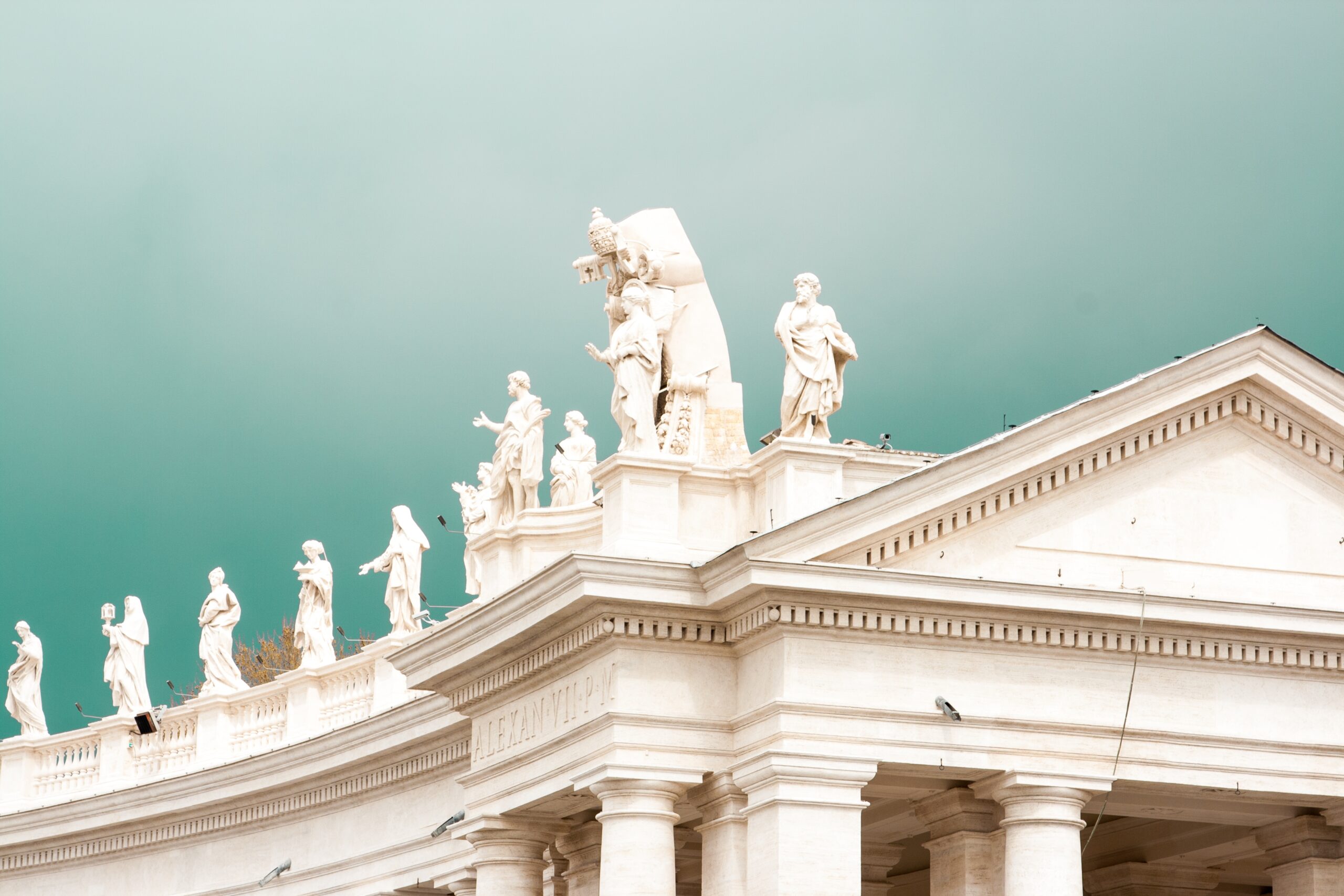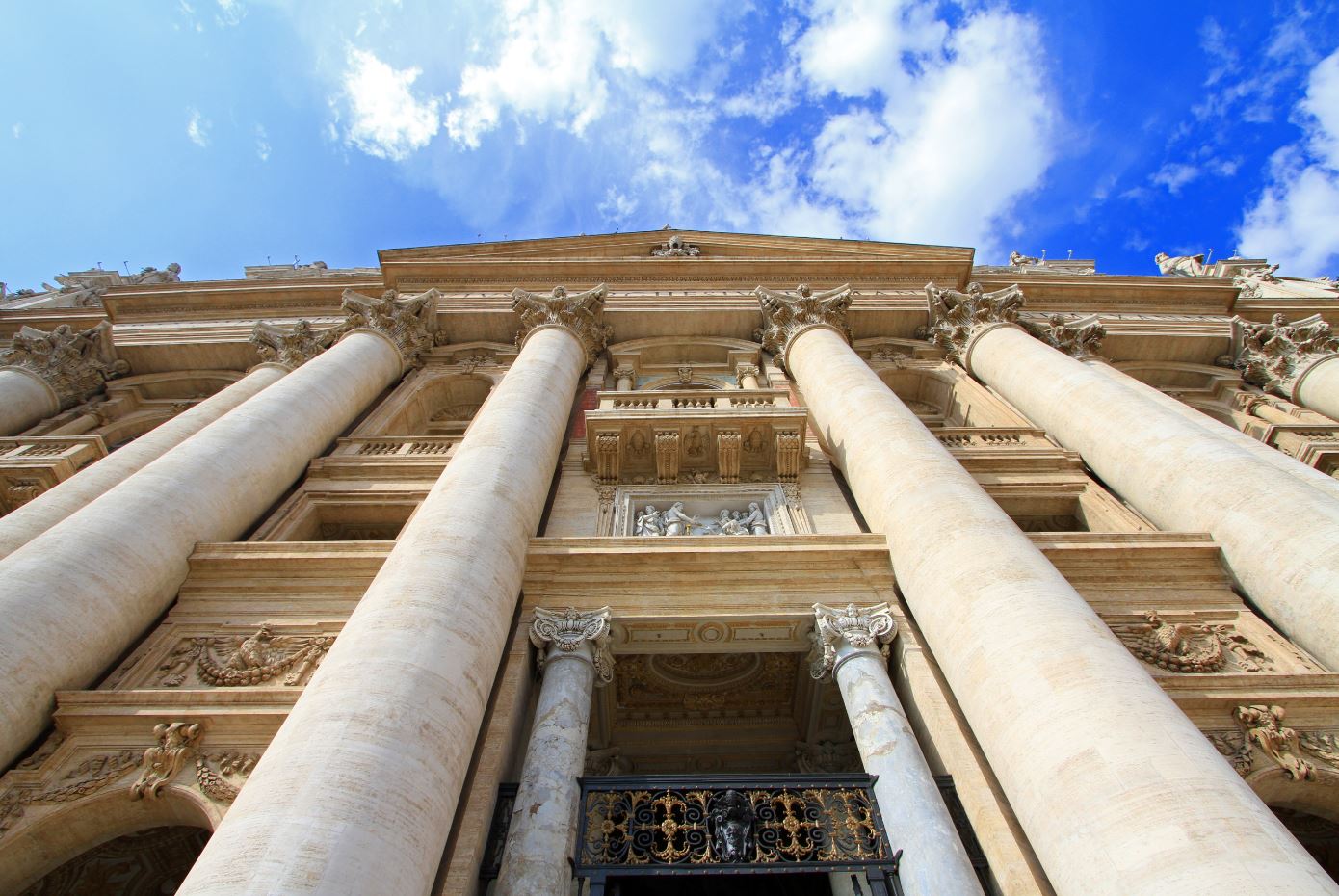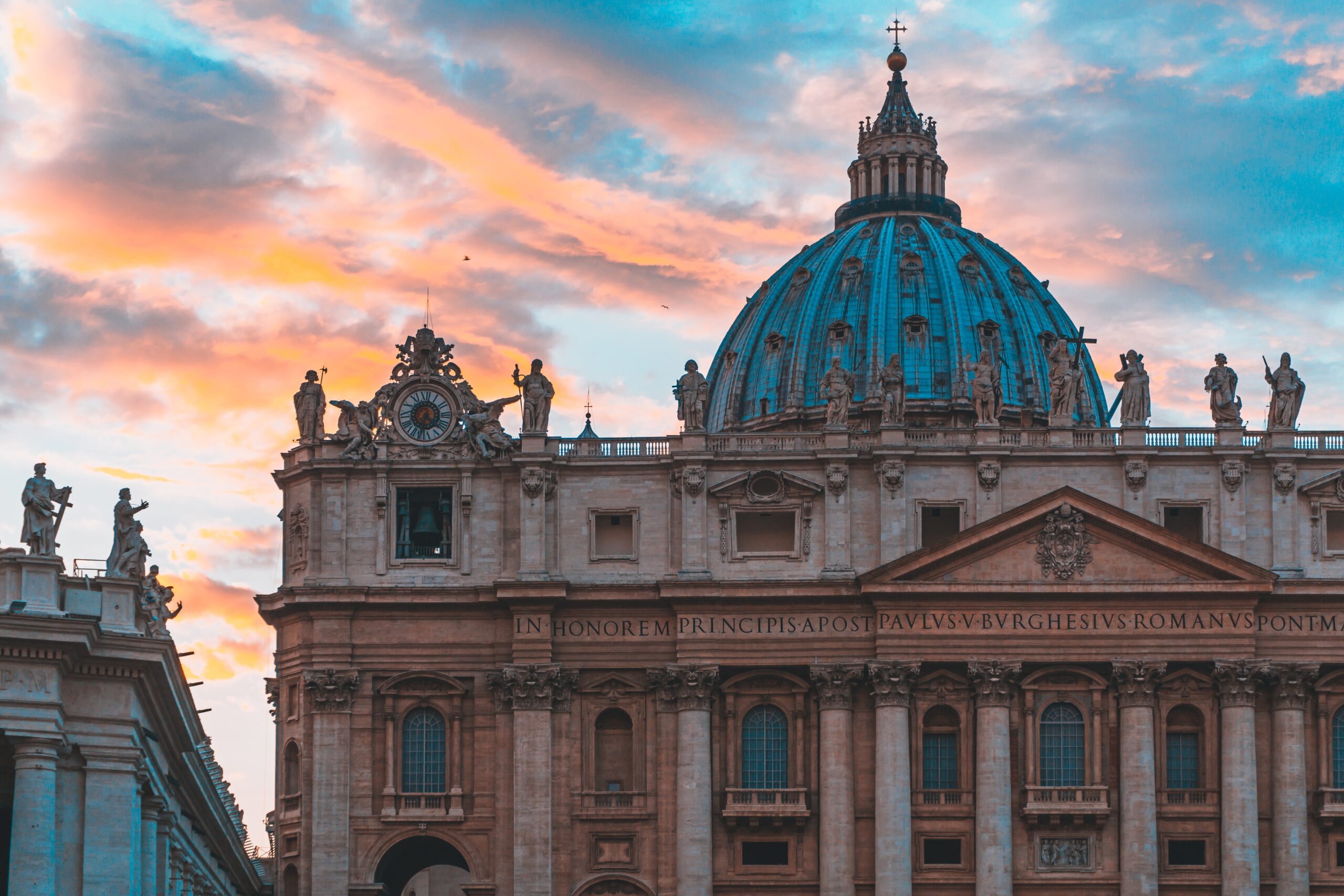Colonnade of Saint Peter’s Square in Roman Travertine
The majestic colonnade that welcomes the faithful and the visitors inside the Saint Peter’s Square is an integral part of Saint Peter’s Basilica and is entirely made out of roman travertine. Pope Alexander VII promoted its construction. Works began in the 17th century and were directed by Gian Lorenzo Bernini. Nowadays it also marks the border between Italy and the Vatican City.
Building the colonnade
The story goes that the same day pope Alexander VII was elected, in 1655, he immediately summoned Gian Lorenzo Bernini, a sculptor and architect of great fame. He had a clear idea for the colonnade that still today inspires such a great awe. The concept behind the request was to give to the Vatican Basilica, the core of Christianity, a square that would enhance its value and prestige. Moreover, the construction of the same Basilica required more than a century, as the works started in 1506 and they had almost just ended (in 1626), when the colonnade was planned.
Works for building the colonnade lasted 11 years (from 1655 and were completed in 1667). Bernini was inspired by the Baroque, an artistic inspiration style that was taking shape in those years. He came up with a two-arm colonnade of oval shape with the widest point of the diameter measuring 240 meters. The metaphor of a colonnade that should embrace people is attributed to the same Bernini.
Besides, the colonnade became famous for its own optical illusion: moving outwards, the column diameter decreases in order to correct the proportional distortion. Therefore, standing on a specific point, marked on the paving, it gives you the illusion that there is only one row of columns instead of four.
Those are 16 meters high Doric columns, 284 to be exact, lined up in rows of four. Resting on their capitals there is an entablature. Taken together, the columns and the entablature create a covered walkway of three aisles: the central carriageable and two lateral pedestrian. On top of the colonnade, in correspondence of each column, stands a 3-meter tall statue. In total there are 140 statues portraying important figures from the Christendom.

The choice of roman travertine
At the beginning of the 17th century Bernini collaborated on the realization of the Basilica. He was involved in the construction of the façade and the bell tower. The Basilica’s exteriors, in particular, display a massive use of roman travertine, namely the façade and the staircase at the Basilica’s entrance. Therefore, it is not hard to believe that the choice of roman travertine for the colonnade was at least partially dictated by those previous works.
However, as his father Pietro, Gian Lorenzo Bernini too was a great admirer of roman travertine value. In fact, Pietro used this delicate natural stone for the Barcaccia, a monumental fountain built in Piazza di Spagna. Instead, for his work at the Saint Peter’s colonnade, Bernini required 44.000 square meters of Tivoli’s natural stone.
The sculptor himself went personally to the Barco quarry, where in the meantime the “Fabric of Saint Peter” was opened. This institution was responsible for the construction of the Basilica and ultimately for the supply of roman travertine. Bernini stayed there for quite a long time in order to supervise the work.
Just like with the construction of Hadrian’s Villa, the blocks extracted in Tivoli were shipped to Rome either on top of ox-drawn wagons or with wooden rafts carried by the force of the river current.

Conclusion
Saint Peter’s colonnade is an example of a monumental architectural work made out entirely of roman travertine. The sheer elegance of the columns expresses a high aesthetic value and is inseparable from the natural stone intrinsic qualities of compactness and resistance.
Due to their timeless beauty and the long-lasting appearance these columns became one of the most appreciated (and photographed) symbols of the Eternal City. Nevertheless, recently the colonnade underwent a delicate and yet intense restoration work that lasted for 5 years. Each column was accurately sandblasted. The sandblasted finish gives a rough look to the surface and has whitening properties. After decades of exposure to weather events, the columns have been restored to their original color and brightness.


Follow Us On Social Media: